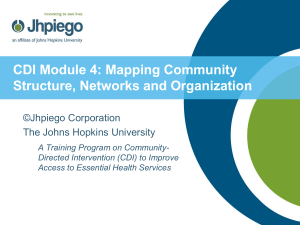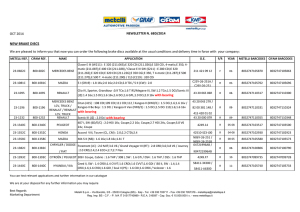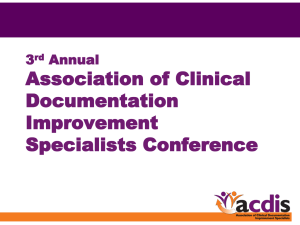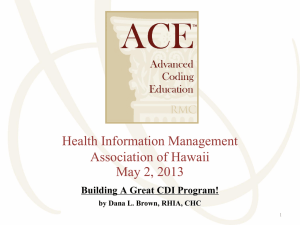T-44A & T44C I0101 Brief (27May14)
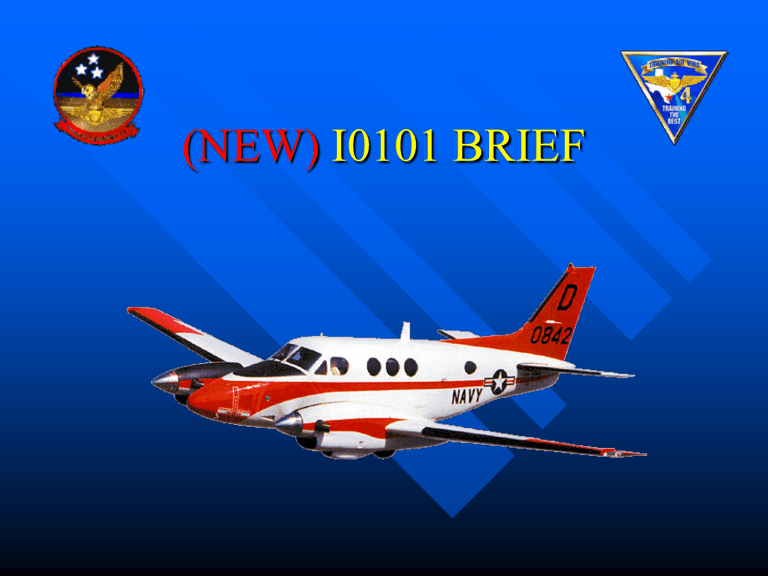
(NEW) I0101 BRIEF
Introduction
Welcome to the Instrument Stage!!
Extensive and intense, and the primary focus of VT-31’s advanced syllabus
Students are expected to demonstrate a strong cross-check, exhibit solid flying skills, maneuver the aircraft precisely, maintain radio communications awareness, manage crew coordination and cockpit duties while demonstrating procedural knowledge and good judgment in emergency situations
Overview
Introduction
Stage Review
Local Operations
Airport Environment
Takeoff/Departure
Enroute
Arrival/Approach Brief
Communications
CRM Callouts
RNAV/GPS Approaches
Common Mistakes
Conclusion
Stage Review
Navy, USMC, USCG
– BI Sims—4 events
– I3200 Block Sims—5 Instrument Sims
– I4100 Block—Instrument Intro
– I3300 Block—Instrument Emergency Sims
– I4200 Block—Instrument Emergency Flights
– I4390—Midphase Checkride
– I4400 Block—Cross Country Events
– I4500 Block—Advanced Instrument EPs
» I4504: BRING INSTRUMENT RATING REQUEST, FILLED
OUT!
– I4690—Final Checkride
– I4701—Solo Cross Country
Stage Review (cont.)
E2/C2
– I3200 Block: 4 Instrument Sims
– I3300 Block: 4 Instrument Emergency Sims
– I4200 Block: 4 Instrument Emergency Flights
– I4390: Midphase Checkride
– I4500 Block: Advanced Instrument Eps
(Review Stage)
– I4690: Final Instrument Check
Local Operations
Local airfields
Coded flight plans
Traffic conflicts
Approach instructions
Coded Flight Plans
COMMONLY USED
CANNED ROUTES
Tango 3- CRP terminal
Area
GCA 1- NGP GCA
GEE 6/MUCHO 5- Valley
ALICE 1-Alice, BKS
NUBIN 3- Victoria, PSX
See Blue Brains for complete listing and description
Coded Departures
KNGP Departures
– Arrow 4
– Island 3
– Lex 2
KCRP Departures
– Gin 2
– Club 1
– Hooks 1
See Blue Brains for complete listing and description
Local Operations
Practical application
– Unless using a GCA-1 or a Tango-3, you must call Base Ops prior to walking to the plane at 961-2505 to file a canned route.
– If filing a DD-175 you must hand walk flight plan to Base Ops
– After ATIS on BTN 1, switch BTN 2 and put Tango-3 or GCA-1 on request. You may also ask to put any other pre-coordinated flight plan on request at this time.
– At Radios/Navaids, switch BTN 2 and call to copy clearance.
Local Operations
Each student shall bring a DD175
– Call the IP the night prior for CCX and Review
Stage hops.
Each crew shall have a DD175-1 (Dash 1)
Have a plan to complete YOUR own training.
DO NOT take current pubs from VT-31
Local Operations
Approach instructions
– Be alert for restrictions/instructions given by
ATC
– Always acknowledge and read back specific clearances. “Roger” or “Wilco” may be used for non-clearance related transmissions.
– Answer quickly and concisely
Local Operations
Typical local examples
– At Bubba Thomas (KT69)
“Navy 1G450, track the approach profile and maintain 3000, expect approach clearance in 3 minutes.”
– Happens because company traffic or a
Southwest 737 is passing under you.
Takeoff/Departure
NAVAID Setup (Technique)
– Joining an Airway, set up CDI for the course and Hdg
Bug on a logical heading
– Have ESIS set up to have an emergency back up readily available.
– RADALT: DH or MDA for recovery approach
– Use TCN channel for a VORTAC recovery
» Allows quick switchover to recovery approach
» Check DME with TCN/VOR switchover
– Technique: CDI on runway heading to ensure departure from correct runway, as well as compass operation. Hdg Bug on departure turnout, such as
(040 on Bay 5)
Takeoff/Departure
Aviate, Navigate, Communicate
– Climb at 150 kts
– Contact Departure
» Who you are, passing altitude off whatever airport, flying whatever departure
– Checklist
» Climb checklist still goes at 1000 ft AGL.
» Start setting up for next approach checklist.
If you aren’t doing something to prepare, you are wrong.
Takeoff/Departure
Weather minimums
– Current weather is at or above the mins for the return approach. (3710.7T)
Enroute
Least busy but possibly most critical part
– No enroute time between NGP and CRP, but some when you go to Alice, Victoria, or Brownsville.
– Use time to ‘get ahead’
» Get ATIS early
» Brief approach as soon as you have the weather
– Always be aware of position and situation
» Look at approach plate for extra SA (ex. Alice VOR-A), you
“live” on the tail of the needle.
» Expect CRP to rapid-fire read ATIS when you check in, they don’t want to release you off frequency – you’re probably less than 5 min from IAF.
Enroute
Prepare for Arrival
– Review NOTAMS/IFR Supp
» Restrictions and Airport Info
– Review Charts
» Familiarize with local airspace, airports and terrain
– Review STARS (As Required)
» If a STAR is published, file it.
– Review Approach Plates
» Review approaches and diagrams, including airport diagram to forecast a taxi plan.
» Technique: 30 Min out, begin to get WX and review airport info (Notams, ATIS, etc). Have all checklists complete and plans made 30 NM from destination if possible.
Arrival
Time Management and Preparation
– Flying the approach is the easy part
– Remember your six T’s
Ensure NAVAIDs are properly set
– DME HOLD if necessary
– TCN Selected, correct station for TACAN
– NDB must be constantly monitored
» Use the Observer!
– Both pilots must be up LOC inside FAF for ILS
» Technique: Keep something (NDB or VOR) up for SA until
FAF
– Ensure marker beacons turned up for ILS
– Don’t forget the LIDS check – outside ATC agencies are less forgiving than CRP.
Arrival
ABCs Technique:
– ATIS
» Check plate for altimeter setting notes
– Brief the Approach
– Checklist
– Descent
» Maintain SA on a chart or a plate
– Expect Vectors
» IAF or final
Arrival/Approach
Brief
Use a high level of professionalism.
When making the initial call:
– Provide the ATIS identifier for intended airfield
– Say “request”. (This allows the controller to be ready and helps avoid clogging up the radios twice with a complicated request).
When the controller says to go ahead with the request:
– State what approach you would like
– How you intend to fly it (vectors/procedure turn/track)
– Where it will begin from (which IAF)
– How it will terminate (full stop, vectors ILS, pilots own navigation to another IAF….etc).
These procedures will help minimize the lengthy extraction of information the controller needs to issue you a clearance and climb out instructions.
Arrival/Approach
Brief
No specific verbiage need be memorized. Rather, like an approach brief, a departure brief should cover the following items at a minimum: a. Approach name and page number b. NOTAMs/remarks/Trouble T c. Navaid frequency (as applicable) d. Initial approach fix e. Final approach course f. Final approach fix/glide-slope intercept altitude g. Step-down altitudes h. DA/MDA i. Required vs. actual weather j. Missed approach point k. Circling information (as applicable) l. Runway length/width m. Missed approach instruction n. Automation (Flight Director/Autopilot)
Approach Lighting Systems
Centerline guidance
Adequate length
Roll guidance
Sequenced flashers
Fixed/Variable intensity
TDZL / CL in Airport Sketch
Touch Down Zone Lights:
First 3000’ of rwy
36 ft from centerline
100 foot spacing
Centerline Lighting: 50 feet
Runway Edge Lights: 200 feet
36’ 36’
2000’
1000
’
2000’
3 0 0 0’
What does the negative symbology mean?
Pilot Controlled Lighting
Are Threshold lights part of the
Approach Lighting System or part of the
Runway Lighting System?
VASI 2
VASI 12
VASI 6 Walker three bar system VASI 16
VASI 4
VASI 8
PA
PI’s
P
CRM &
Mandatory
Callouts
CRM
Described in OPNAV 3710.7.
Intended to improve the mission effectiveness of all aviation communities by enhancing crew coordination through increased awareness of associated behavioral skills.
DAMCLAS
7. CRM
The PF shall fly the aircraft and maintain a dedicated heads-up lookout. If the PF wishes to be heads-down for an EXTENDED period of time, aircraft control shall be transferred to the
PM who shall remain heads-up.
7. CRM
If the PM must divert attention away from normal clearing and monitoring duties for an
EXTENDED period of time, he shall state,
“ heads-down
”. Verbal acknowledgment from the PF is necessary to prevent both pilots from being heads-down at the same time.
7. CRM
Any crewmember that observes both pilots
“ heads-down
” at the same time shall alert the
PF without delay.
DATA ENTRY
– Taxi – Data entry, while the aircraft is in motion, shall be made by the PM. Either pilot may make entries if the aircraft is stopped with the parking brake set.
– In-Flight – Data entry shall be made by the PM.
7. CRM
VERIFICATION
– After data entry, points should be verified by the instructor prior to pressing the execute button
– This may be delegated by the IP
Mandatory Callouts
The information exchange are not “boldface” statements. We’re promoting a useful exchange of information. Just get the information in there, and don’t focus on the clumsy phrasing. See Chapter 22 in the
NATOPS and appendix G for all CRM concepts, mandatory call outs, and when they should be utilized.
RNAV and GPS Approaches
And now for something completely different……
This will be general info only.
I0102 will be A-Mod / C-mod specific.
RNAV and GPS Approaches
6.
7.
4.
5.
8.
1.
2.
3.
Preflight and ground ops
CDI scale
Inflight
Types of approaches
How to fly them
Warnings
CRM
Extras
NOTAMS
Database
Load the FMS
1. Preflight and
Gnd Ops
1. Preflight and
Gnd Ops
2 New NOTAMS to check
– GPS
– Database
1. Preflight and
Gnd Ops
KGPS - GET THE GPS NOTAMS!!!
– Pseudo Random Noise 15
– Unreliable 16
Receiver Autonomous
Integrity Monitoring
RAIM detects faults with redundant GPS pseudorange measurements.
A minimum of five visible satellites with satisfactory geometry must be visible for
GPS RAIM
1. Preflight and
Gnd Ops
Check that you have a current database
LOAD THE FMS - SID through destination and approach
– Student loads – IP verifies and executes
Check RAIM for destination at ETA
1. Preflight and
Gnd Ops
Determine that the waypoints and transition names coincide with names found on the procedure chart.
Determine that the waypoints are logical in location, in the correct order, and that their orientation to each other is as found on the procedure chart, both laterally and vertically
2. CDI SCALE
CDI Displacement
3 Modes of Operation
– Enroute
– Terminal
– Approach
2. CDI SCALE
2. CDI SCALE
Enroute Mode
– CDI = +/-5NM
Enroute mode is active:
– Once reaching 30 nm from the departure airport
– Until within 30 nm of arrival airport
2. CDI SCALE
Terminal Mode
– Once within 30 nm of the arrival field, CDI sensitivity improves to +/-1NM
» T-44A APPR light on annunciator panel
» T-44C “TERM” message on PFD
–
VERBAL RESPONSE REQUIRED
» “APPROACH MODE ARMED”
2. CDI SCALE
APPROACH MODE
– Once withing 2 nm of FAWP, CDI sensitivity improves to +/-.3NM
» T-44A – Short message in scratchpad (if you miss it, check
CDI displacement on Progress 3-3)
» T-44C – “GPS APPROACH” Message on PFD
–
VERBAL RESPONSE REQUIRED
» “APPROACH MODE ACTIVE”
2. CDI SCALE
“Approach Armed / Approach Active” are
MANDATORY calls.
Technique –
– Sandwich the landing checklist: “At 2 nm, verify approach mode Active. Speed checks, gear down, landing checklist.” Do the checklist, and after you hear “Checklist Complete” say, “Verify approach mode Active.”
BEFORE
APPROACH
Check RAIM enroute
Withing 30 nm of airport,
APPR light must illuminate, or TERM on
T-44C PFD.
– OBSTACLE
CLEARANCE
DEPENDS ON THIS
BEFORE
APPROACH
APPR light requires a verbal response
– “APPR MODE ARMED”
Check points from FMS with the procedure
– Check names and that the procedure looks logical on your display (T-44C)
BEFORE
APPROACH
Proceed to IAF
Check for large intercept angle and be prepared for early transition?
When can you descend?
WHEN TO
DESCEND
ESTABLISHED AT IAF:
– Established on the Approach &
– In Terminal Mode (“
APPROACH MODE
ARMED
”)
ESTABLISHED AT FAF:
– Established on the Approach &
– In Approach Mode (“
APPROACH MODE
ACTIVE
”)
WHAT MINS TO
FLY:
A OR C-MODEL
WHAT MINS TO
FLY:
C-MODEL ONLY
Missed Approach
Waypiont: MAWP
MAP: 2 Choices
– 1 – Go-Around button
» Auto sequences and puts you in Mod-Legs (A-mod) /
Active Legs (C-mod) page, but doesn’t become active yet
» Push EXECUTE and the needles/CDI will go to the next point (Not required in C-mod – it removes Inhibiting).
– 2 – Manual Sequencing
» At MAP, manually sequence to the MAWP
– ** REMEMBER, THE A-MODEL BOX WON’T
TELL YOU EVERYTHING, YOU MUST FOLLOW
THE PAPER
MAWP
WARNING!!!
*** DO NOT change the FMS settings prior to the MAP (delete the Discontinuity, cycle to the next point, etc..). Doing so will change the CDI displacement back to +/- 1 nm and you will not have the required navigational performance to be down at MDA.
AFTER
APPROACH
Staying at the same airport?
– for another approach, simply select another one
Going somewhere else?
– Change arrival airport or use On Deck /
Secondary flight plan.
6. WARNINGS
INTEG LIGHT (RAIM)
INTEG Light (NAV “OFF” FLAG)
–
RAIM is not available
– Signal may not keep you inside RNP values for current segment of flight
NO RAIM = Can’t use GPS for guidance
– APPROACHES
–
SID/STAR
–
ENROUTE
6. WARNINGS
INTEG LIGHT (RAIM)
Your NAV ‘OFF’ Flag
PRIOR TO FAWP
– Transition to a ground-based navaid approach or get vectors.
– DO NOT DESCEND TO MDA
AFTER FAWP
– Transition to a ground-based navaid approach or get vectors.
– CLIMB AND PROCEED TO MAWP
7. EXTRAS
Step-down fixes beyond the FAF will not be in the database
You cannot create any IAPs, nor alter them.
– You may only pull them directly from the database.
– THIS MEANS CREATING WPs TO FLY AN ARC
IS ILLEGAL!
» No GPS-based arcing approaches allowed!
GPS IN LIEU OF
ADF/DME
You can use GPS for:
– Determine position over a DME fix
– Navigating to/from an NDB/OM (even if it’s out of service)
– Determine position over an NDB/OM
– Hold over an NDB/OM
DOES NOT MEAN YOU CAN SHOOT AN OTS
NDB APPROACH WITH THE GPS IF IT ISN’T AN
OVERLAY APPROACH!!!
Conclusion
Focus of Maritime Advanced Program
Study!
– NATOPS
– FTI
– AIM/FAR
– AIGT workbook
– NATOPS Instrument Flight Manual (IFM)
– OPNAVINST 3710.7
Be familiar with Local Operations
Chairfly Approaches, Briefs and EPs
This is all about you. Its YOUR wings, YOUR career and YOUR responsibility to come ready.

